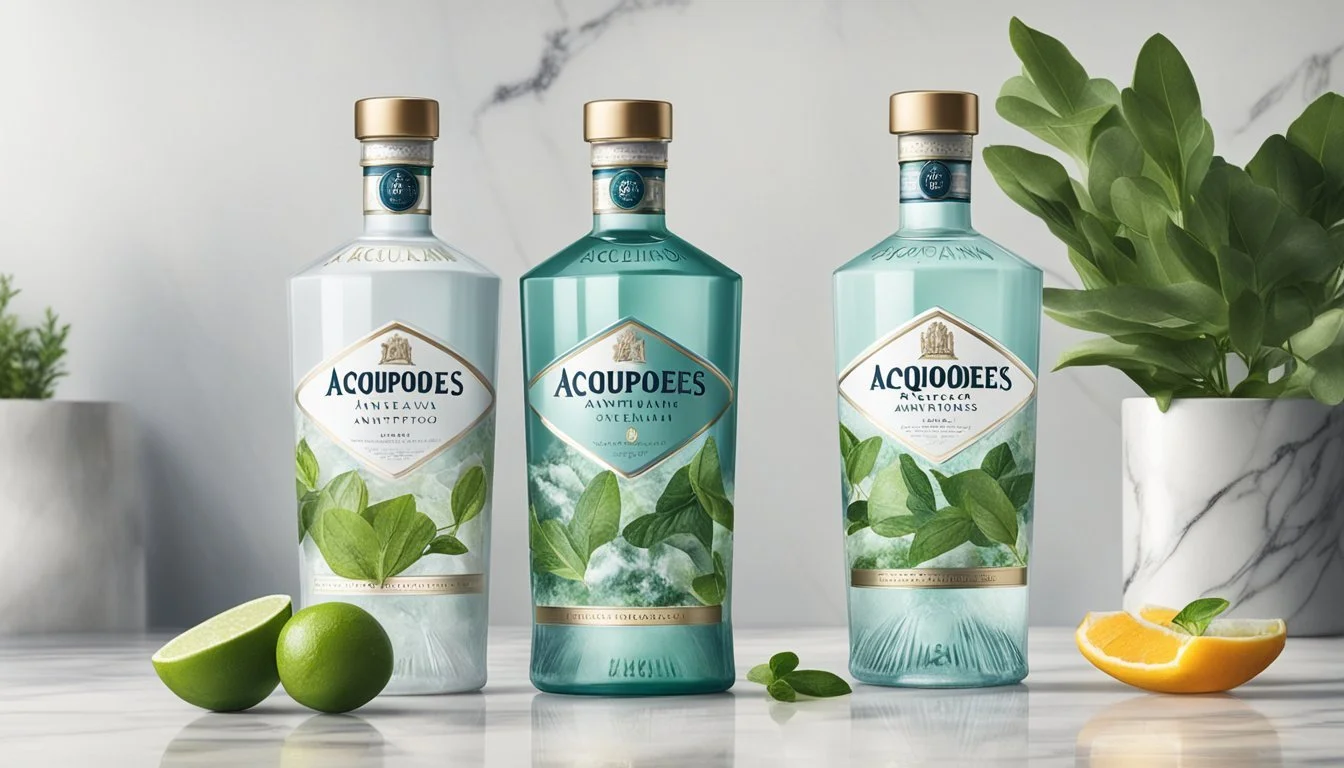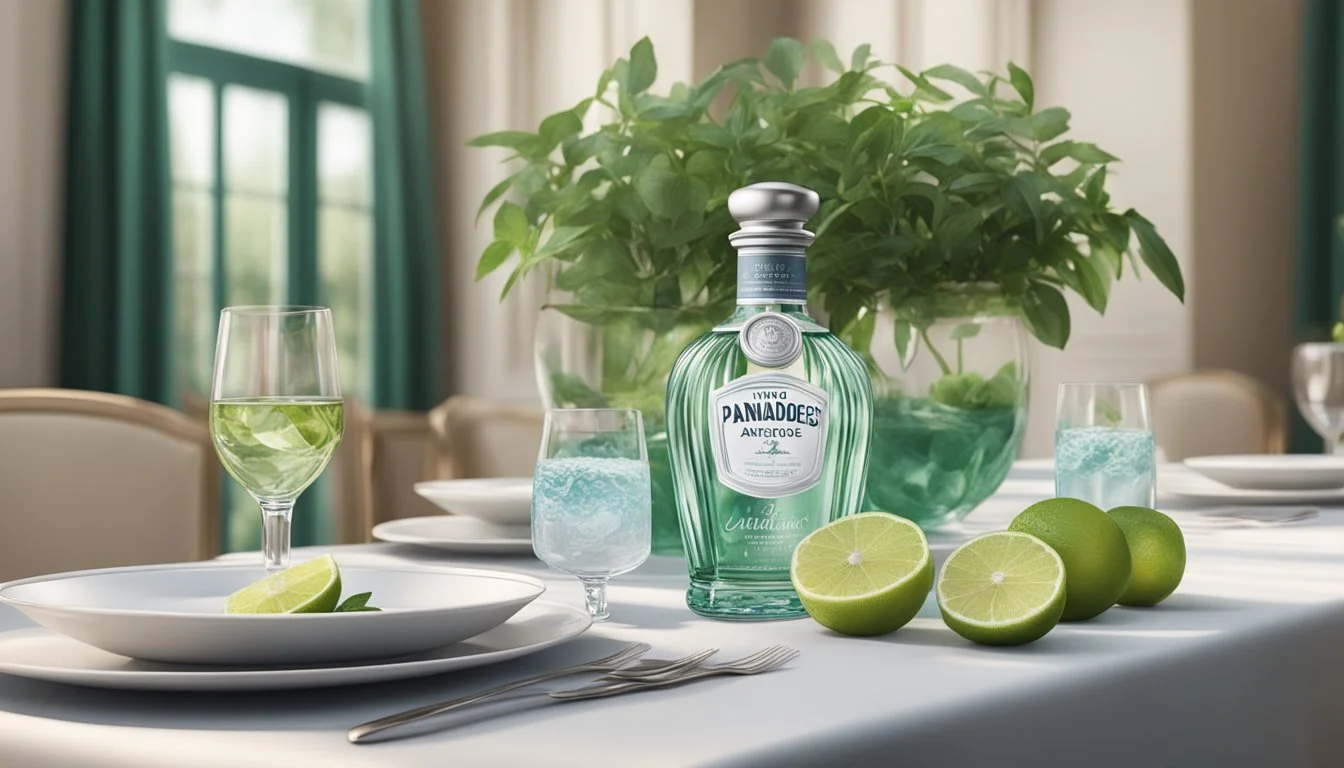Acqua Panna vs. Antipodes
Which Bottled Water is Better?
Acqua Panna and Antipodes are two premium bottled water brands that often find themselves at the top of water connoisseurs' lists. Originating from different parts of the world, Acqua Panna comes from the pristine springs of Tuscany, Italy, renowned for its crisp, smooth taste and a pH level around 8.0 which supports a balanced dietary pH. In contrast, Antipodes hails from the pure aquifers of New Zealand, with its neutral pH of around 7.0 offering a clean and fresh drinking experience.
Both waters are often seen on the tables of high-end restaurants and preferred by those with a discerning palate. The luxurious reputation of Acqua Panna is often attributed to its historical roots and the consistent quality of its mineral-rich composition. Meanwhile, Antipodes is celebrated for its exceptional purity and sustainable practices, which resonate well with environmentally conscious consumers.
Choosing between Acqua Panna and Antipodes ultimately comes down to personal preference and specific needs, but both brands promise a high-quality and refreshing drink. Readers who are passionate about not just hydration but also the subtleties of taste, origin, and environmental impact will find this comparison particularly enlightening.
Understanding Bottled Water
Bottled water has become a staple in many households. It is essential to grasp the different types and the regulatory standards ensuring safety and quality.
Defining Bottled Water Types
Bottled water includes several types, each with unique characteristics and sources. Spring water comes from an underground formation, flowing naturally to the surface. Mineral water contains a set amount of minerals, naturally occurring from its source. Purified water is highly treated and filtered, often sourced from tap water.
Consumers might prefer mineral water for its beneficial minerals like calcium and magnesium. In contrast, purified water aims for purity, stripped of impurities and certain minerals. Spring water's appeal lies in its natural origin and minimal processing, offering a middle ground.
Regulatory Standards and Safety
The safety and quality of bottled water are tightly regulated. In the United States, the EPA sets the standards for drinking water, while the FDA regulates bottled water. The FDA’s regulations ensure bottled water must meet standards similar to those set by the EPA for tap water.
Bottled water must go through regular testing, and companies must provide quality reports. Certifications from recognized bodies guarantee that the water is free from contaminants and safe for consumption. Consumers can trust these reports to understand the makeup and safety of the water they drink.
The Brands in Focus
Acqua Panna and Antipodes both offer unique characteristics and sources that may appeal to different consumer preferences. Exploring the origin, source, and distinct qualities of each brand will help in making an informed decision.
Acqua Panna: Origin and Distinctiveness
Acqua Panna originates from Tuscany, Italy, specifically from the Villa Panna estate. The brand's history goes back over 450 years, making it one of the oldest bottled water brands. It is naturally filtered through limestone rock, which gives it a distinct, neutral pH level of around 8.0, making it a favored choice for those seeking balanced dietary pH.
The water is celebrated for its smooth taste and light mineral content, which includes calcium and magnesium. This combination makes it ideal for pairing with fine dining experiences. The brand enjoys a strong reputation for quality and is frequently seen in high-end restaurants and hospitality venues.
Antipodes: Source and Unique Qualities
Antipodes is sourced from an aquifer in the Bay of Plenty, New Zealand. The water is naturally deep underground and goes through a volcanic rock filtering process, which embeds it with unique mineral properties. The pH level of Antipodes water is neutral, sitting at around 7.0, which is generally considered optimal for drinking.
Antipodes is lauded for its pristine and pure taste, attributed to its low dissolved solids content. The brand’s eco-friendly approach, including using glass bottles and committing to carbon neutrality, enhances its appeal, particularly among environmentally conscious consumers. Antipodes has garnered a strong international reputation, emphasizing sustainability and purity.
Taste and Composition
Acqua Panna and Antipodes offer unique taste experiences influenced by their specific mineral compositions and water sources. Each bottled water has distinctive health benefits linked to its mineral content.
Water Taste Profiles
Acqua Panna, sourced from the hills of Tuscany, is renowned for its smooth and velvety texture. This water is often described as having a subtly sweet flavor and a well-rounded profile. The minimal mineral flavor ensures a refined drinking experience.
Antipodes, sourced from New Zealand, provides a crisp and clean taste. The water undergoes natural filtration through volcanic rock, which imparts a fresh and invigorating flavor. It is celebrated for its pure, neutral taste, reflecting the pristine environment of its source.
Mineral Content and Health Implications
Acqua Panna boasts a balanced mineral content, including calcium and magnesium, essential for bone health and metabolic functions. This water also has a slightly alkaline pH, contributing to its smooth taste and potential health benefits.
Antipodes features a distinct mineral profile with notable levels of silica, calcium, and potassium. The low sodium content makes it a suitable choice for those monitoring their sodium intake. The water’s natural composition supports overall hydration and wellness. Additionally, its balanced pH helps to maintain the body's equilibrium.
Environmental and Health Considerations
Understanding the environmental and health impacts of Acqua Panna and Antipodes can help consumers make more informed choices. Key factors include packaging materials, the bottling process, and the hydration benefits provided by each water brand.
Packaging and Environmental Impact
Acqua Panna and Antipodes offer differing approaches to packaging. Acqua Panna primarily uses plastic bottles, contributing to greater environmental impact due to the extensive resources needed for production, transportation, and recycling.
Antipodes notably opts for glass bottles, which are more environmentally friendly as they are highly recyclable and reduce plastic waste. Glass packaging also ensures that no harmful chemicals leach into the water, preserving its natural purity. This makes glass an appealing option for eco-conscious consumers.
Bottling Process and Purity
Both brands prioritize the purity of their water, drawing from natural spring sources. Acqua Panna's water filters through the earth for 13 years, naturally acquiring a balanced mineral composition and maintaining a neutral pH around 8.0, which is desirable for those monitoring their dietary pH.
Antipodes, on the other hand, emphasizes environmental sustainability in its bottling process. The company uses energy-efficient practices to ensure the water retains its cleanliness and mineral equilibrium. The focus on minimizing environmental footprint while maintaining clean drinking water standards sets Antipodes apart in the market.
Hydration and Health Benefits
From a hydration perspective, Acqua Panna's mineral-rich profile includes calcium, magnesium, and bicarbonates, offering essential nutrients, aiding in digestion, and maintaining bone health. Its balanced pH further supports overall bodily functions.
Antipodes's water composition is also beneficial. With a neutral pH closer to 7.0, it provides pure hydration without altering the body's natural balance. It's ideal for daily consumption, ensuring the body remains well-hydrated and refreshed.
Both brands deliver high-quality drinking water, but the choice may come down to personal preferences regarding environmental impact and desired health benefits.
Consumer Experience and Accessibility
In comparing Acqua Panna and Antipodes, important factors to evaluate include consumer perception of each brand and their availability in retail settings.
Branding and Consumer Perception
Acqua Panna has cultivated a reputation that emphasizes its origins from the Villa Panna hills in Tuscany, Italy. Known for its smooth taste and balanced mineral content, it appeals to those seeking a premium bottled spring water. The luxurious branding and historical narrative around its source enhance its appeal, particularly among discerning consumers, including water sommeliers.
Antipodes, on the other hand, is marketed as a sophisticated option in the glass bottled water category. It highlights the purity of its water filtered through ancient rock in New Zealand. This clean and minimalist branding resonates well with eco-conscious consumers and those prioritizing sustainable and environmentally friendly options.
Availability and Retail Presence
Acqua Panna is widely available in many regions and can be found in high-end grocery stores and restaurants. Its robust distribution network ensures it has a strong retail presence, making it accessible to a broad audience.
Antipodes, while also found in upscale outlets, may have a more limited availability compared to Acqua Panna. It is often featured in specialty shops and establishments focused on premium and sustainable products. Both brands, due to their premium status, might not be as readily available in all standard retail outlets but maintain niche markets in select locations.
Comparison and Conclusions
Acqua Panna and Antipodes offer distinct characteristics that make them unique choices for bottled water enthusiasts. Key aspects such as pH levels, source, and packaging will be examined to determine which brand stands out.
Side-by-Side Brand Comparison
Source and Origin:
Acqua Panna: Sourced from the hills of Tuscany, Italy. It is naturally filtered through the earth, lending it a unique mineral composition and taste.
Antipodes: Hails from the aquifers of New Zealand, known for its purity and pristine environment.
pH Levels:
Acqua Panna: Maintains a balanced pH of around 8.0, which is considered slightly alkaline and beneficial for those maintaining a balanced dietary pH.
Antipodes: Also slightly alkaline, typically with a pH close to 7.7, promoting a refreshing taste while being gentle on the stomach.
Packaging:
Acqua Panna: Features a simple yet elegant design with an orange label, making it eye-catching on shelves.
Antipodes: Often recognized for its clear, minimalist bottle design that emphasizes its pure, unadulterated nature.
Taste and Texture:
Acqua Panna: Known for its velvety texture and sweet savor that makes it a favorite in fine dining establishments.
Antipodes: Boasts a clean, crisp taste that is often highlighted for its purity and slight mineral finish.
The Bottom Line
Ranking and Popularity:
Acqua Panna: Often regarded as one of the top global bottled water brands, its reputation is bolstered by its widespread availability and premium positioning.
Antipodes: While not as globally known, it commands respect among connoisseurs for its high quality and boutique appeal.
Price Point:
Acqua Panna: Generally found in mid-to-high range price points, reflecting its premium quality and brand heritage.
Antipodes: Similarly positioned within premium segments but may vary slightly depending on regional availability.
Environmental Impact:
Acqua Panna: Committed to sustainable practices in sourcing and packaging, with efforts to reduce plastic use.
Antipodes: Focuses heavily on eco-friendly packaging and responsible water harvesting, making it a conscious choice for the environmentally aware.
Both brands offer high-quality bottled water with unique benefits. Preferences may vary based on taste, texture, and brand ethos, but both Acqua Panna and Antipodes are exemplary choices in the premium bottled water market.






